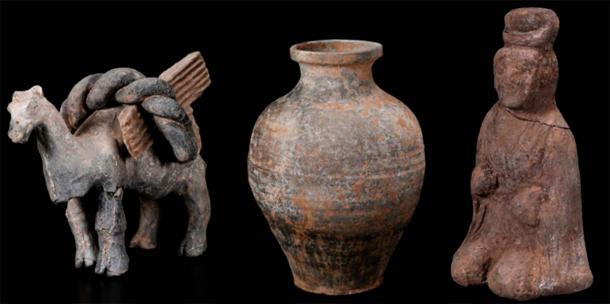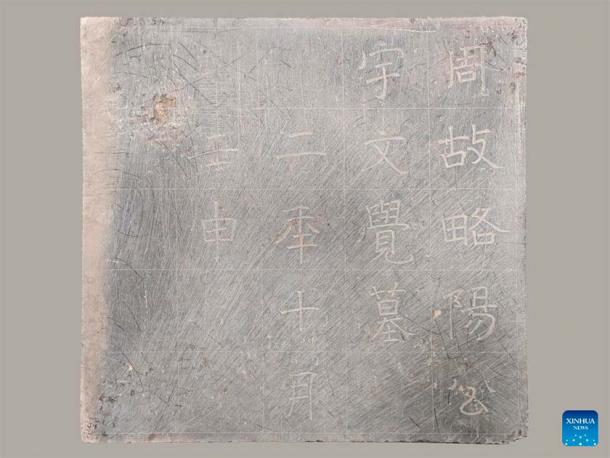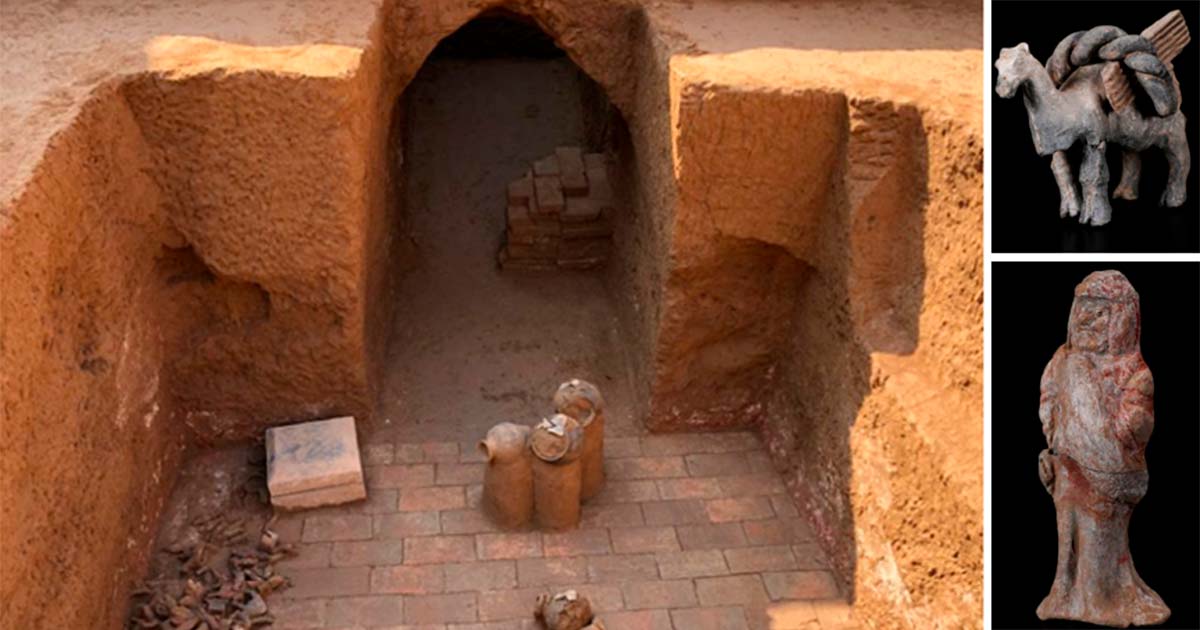Stacked 1,400-Year-Old Zhou Dynasty Emperor’s Tomb Uncovered in China
Archaeologists in Shaanxi Province, northwest China, have discovered the tomb of Emperor Xiaomin (birth name Yuwen Jue), the founding emperor of the Northern Zhou Dynasty (557-581). Emperor Xiaomin's tomb, a medium-sized one in the context of the Northern Zhou dynasty, is situated in Beihe Village, Weicheng District, Xianyang, an area known for its concentration of high-quality tombs spanning from the Northern Dynasties (439-581) to the Sui and Tang dynasties (581-907).
- Mythical Ancient Emperors Who Fought Over the Birth of China - Who Started It?
- An honored Zhou Dynasty warrior, buried with a chariot and horses, has been unearthed in China
Uncovering Zhou Dynasty Emperor Tomb: Medium-Sized but Power Packed
The tomb itself faces south and is a single-chamber soil cave tomb with four patios along the sloping tomb passage, according to a press announcement by Shaanxi Academy of Archaeology on Tuesday. Covering a total length of 56.84 meters (186.5 ft) from north to south, the bottom of the tomb lies 10 meters (32.8 ft) beneath the current surface.
According to the press announcement:
“The archaeological discovery of Yuwen Jue’s tomb from the Northern Zhou Dynasty is of great significance. It is the second Northern Zhou emperor’s tomb that has been excavated after the Xiaoling Mausoleum of Emperor Wu of the Northern Zhou Dynasty.”

Among the pottery unearthed at the Zhou Dynasty, Emperor Xiaomin’s tomb is a pot, camel, and votive offering figurines. (CASS)
Though the tomb had previously been looted, archaeologists have managed to recover 146 burial objects, primarily pottery figurines in a single chamber holding funerary offerings, depicting warriors and cavalry units. Furthermore, the presence of an epitaph on the tomb's eastern side has allowed archaeologists to confirm that the tomb belonged to Emperor Xiaomin (542-557), reports Heritage Daily.

The inscription on the tomb's eastern side confirmed it as Emperor Xiaomin's resting place. (CASS)
This discovery holds immense significance for historical research into the emperors of the Northern Dynasty, as highlighted by Zhao Zhanrui, an assistant researcher at the academy.
Northern Zhou: Foundation of a Short-Lived Dynasty
Rather than assuming the title of emperor, Xiaomin, also known as Emperor Ming of Northern Zhou, chose to adopt the Zhou Dynasty's title of "Heavenly Prince." However, his reign was marred by internal strife and power struggles. A significant conflict unfolded between Xiaomin and his cousin, Yuwen Hu, who sought to consolidate his own power.
In a dramatic turn of events, Yuwen Hu managed to depose Xiaomin from his position and subsequently had him killed. This political maneuvering further highlighted the instability and internal divisions that plagued the Northern Zhou Dynasty during its relatively brief existence.
The Northern Zhou Dynasty, which reigned from 557 to 581 AD, was a significant but relatively short-lived era in the history of ancient China. Founded by Yuwen Tai, who took the title of Emperor Wen upon his ascent to power, the dynasty was established following a successful rebellion against the ruling Northern Wei Dynasty.
The Northern Zhou's capital was Chang'an, an influential city located in what is now Xi'an, Shaanxi Province. Chang'an was known for its cultural richness and strategic importance as a center of trade and governance.
One of the most notable aspects of the Northern Zhou Dynasty was its association with Buddhism. Emperor Wen and his successor, Emperor Wu, were fervent Buddhists, and they played a pivotal role in promoting Buddhism as the state religion. They supported the construction of Buddhist temples, sponsored the translation of Buddhist scriptures, and actively contributed to the growth of Buddhism in China. This period marked a significant turning point in Chinese religious and cultural history.
Emperor Wen and Emperor Wu also implemented important political reforms aimed at strengthening the central authority of the emperor. Land redistribution was one such reform, aimed at reducing the power of the aristocracy and redistributing land to the common people. These efforts were indicative of the dynasty's desire to create a more equitable society.
Despite these reforms, the Northern Zhou Dynasty faced challenges. The empire's unity weakened over time, leading to regional fragmentation and conflicts among various power centers. Eventually, the Northern Zhou Dynasty succumbed to internal strife, and it was conquered by the Sui Dynasty in 581. This marked the end of the dynasty's relatively short but culturally impactful existence.
- Finders of the Terracotta Army Think They Are Cursed
- Unlocking Japan's Keyhole Tombs: Ancient Secrets (Video)
Legacy and Historical Relevance of the Northern Zhou
The legacy of the Northern Zhou Dynasty lives on in several ways. Its patronage of Buddhism had a lasting influence on Chinese religion, culture, and art. The dynasty's contributions to calligraphy and sculpture, particularly in the context of Buddhist art, marked significant advancements in Chinese culture. Furthermore, some of its political reforms, such as those related to land distribution, influenced subsequent Chinese dynasties, including the powerful Tang Dynasty.
Notably, the Northern Zhou Dynasty was unique in its ethnic background. Its founding emperor, Yuwen Tai, belonged to the Xianbei ethnic group, making the dynasty one of the few in Chinese history to be ruled by a non-Han Chinese ethnic group, a rarity.
Top image: Zhou Dynasty Emperor’s tomb was uncovered in China, belonging to the Northern Zhou Dynasty. Source: CASS
By Sahir Pandey
References
Huaxia. 2023. Tomb of ancient emperor found in China's Shaanxi. Available at: https://english.news.cn/20230919/9b9a034e460a4f809aa2bf22af309499/c.html.
Milligan, M. 2023. ARCHAEOLOGISTS UNCOVER TOMB OF EMPEROR XIAOMIN OF NORTHERN ZHOU. Available at: https://www.heritagedaily.com/2023/09/archaeologists-uncover-tomb-of-emperor-xiaomin-of-northern-zhou/148701.

















